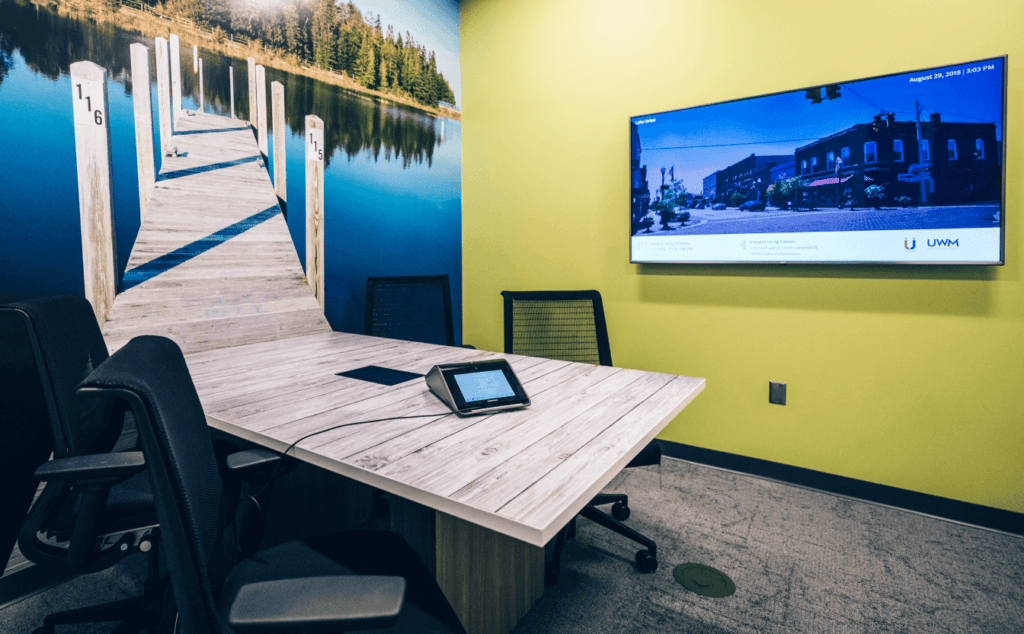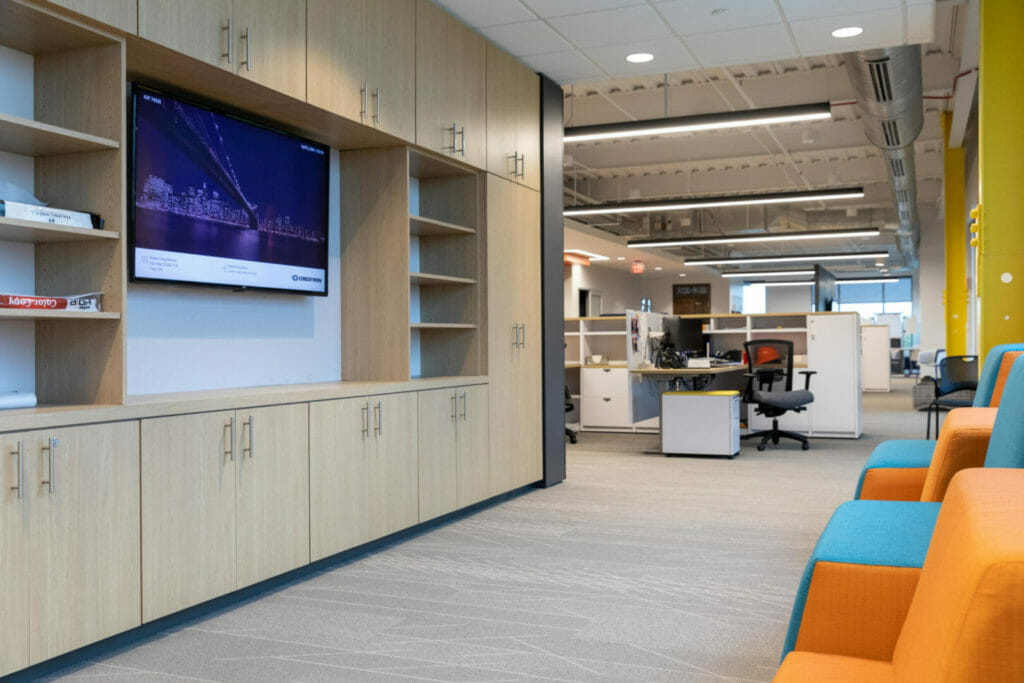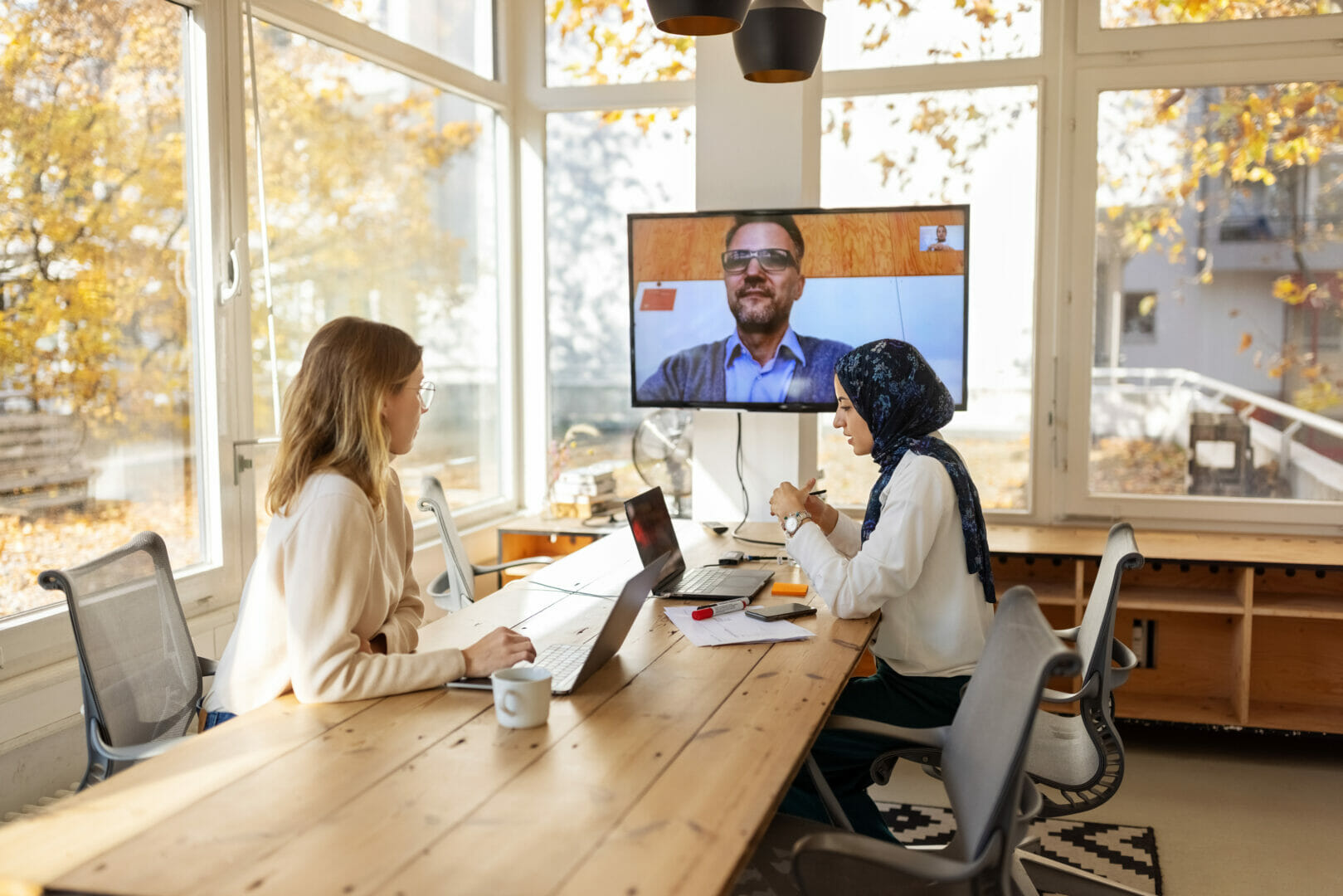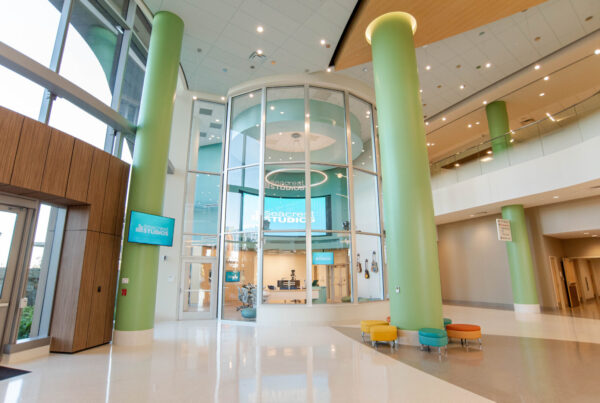Hybrid work is here. And for most businesses that went virtual or hybrid over the last few years, it’s here to stay.
This new world of hybrid work has massive implications for your meeting spaces and AV systems. Consider these five points — and whether this shift in the way people work means it’s time to update systems in your facilities.
1. Clear, Intelligible Audio for All Parties Is Crucial
Zoom meetings already pose an auditory challenge. When the in-room device isn’t picking up your in-office staff clearly, you create new hurdles and frustrations for your distance and at-home teams.
A high-quality tabletop microphone (or an all-in-one conferencing solution such as Crestron Flex) is usually your best bet. You want something that can capture all voices in the room and be muted at the press of a button.
2. Plan Rooms and Camera Equipment for Maximum Visibility
In a hybrid work environment, just about every meeting becomes at least partially a videoconference meeting. Don’t leave your at-home employees blind to what’s happening in the room. Plan for cameras that meet the needs of each space.
Consider a video bar for smaller rooms or a camera with fisheye lens if you need to capture a wide setting. (But don’t install a fisheye in a space where just one or two people will be jumping on video.)
If you’re outfitting larger spaces, investing in an autofocusing pan/tilt/zoom camera may be worthwhile, too.

3. In-Room Displays Aren’t One Size Fits All
In the past, your in-room projectors and displays usually had one primary purpose: displaying project data, PowerPoint shows, training videos, and the like.
You might occasionally use a display for videoconferencing, but this was a secondary application at best for many businesses.
Now, it’s not quite so simple. Various meeting spaces might have differing use cases, and all of them need to be more flexible in the past. Certainly, any and every display needs to be videoconference-capable, including a webcam as we mentioned just above.
Make sure you’re choosing displays that are flexible enough to do what you need in a given space. This area isn’t one size fits all, so a capable AV integrator can help you make the best choices for your spaces.

4. Businesses Are Opting for More, Smaller Spaces
Businesses that are leaning heavily into hybrid work end up needing more videoconferencing-ready spaces than before, but they don’t need as many large spaces.
Where before you’d gather the whole project team in one conference room once every two weeks, you’re likely holding a Zoom call for that meeting now, with only a portion of the team in the office sharing a conference room. So your larger rooms aren’t being used as often (or are being used by much smaller groups).
At the same time, because in-office employees can’t just walk over to out-of-office employees’ desks for a quick face-to-face, they end up needing to duck into a private space for a quick call much more often.
The result? Businesses are opting for smaller spaces, and more of them.
Bonus Tip: Agile, Modular Spaces Are Even Better
One approach that’s working well for some firms is to create agile, modular spaces that can open up for larger meetings or partition out to form multiple smaller spaces that can be used concurrently.
If you have a cavernous meeting space that fits 10 to 20, but you notice that most of the time it’s booked by groups of 6 or smaller, then that space is being wasted most of the time. Consider a modular approach when it’s time to rework the space.
5. Personal Space Preferences Have Changed
The era of social distancing may be nearing an end, but its impact will be felt for years to come. For many individuals, personal space preferences won’t go back to how they were before social distancing became the norm— at least not for quite some time.
Plan your public spaces, including meeting spaces, accordingly. That conference table that can barely fit eight chairs? Go with six, or even four. You might opt for four permanent chairs with a few folding chairs for when you need them.
Designing meeting spaces with greater personal space and distancing in mind has another advantage: should we encounter another variant or surge or some other public health event where distancing becomes important, you’ll be able to make that transition quickly.
Ready to make some changes to accommodate your hybrid workforce? Bluewater is ready to guide you. Reach out today to get started!











